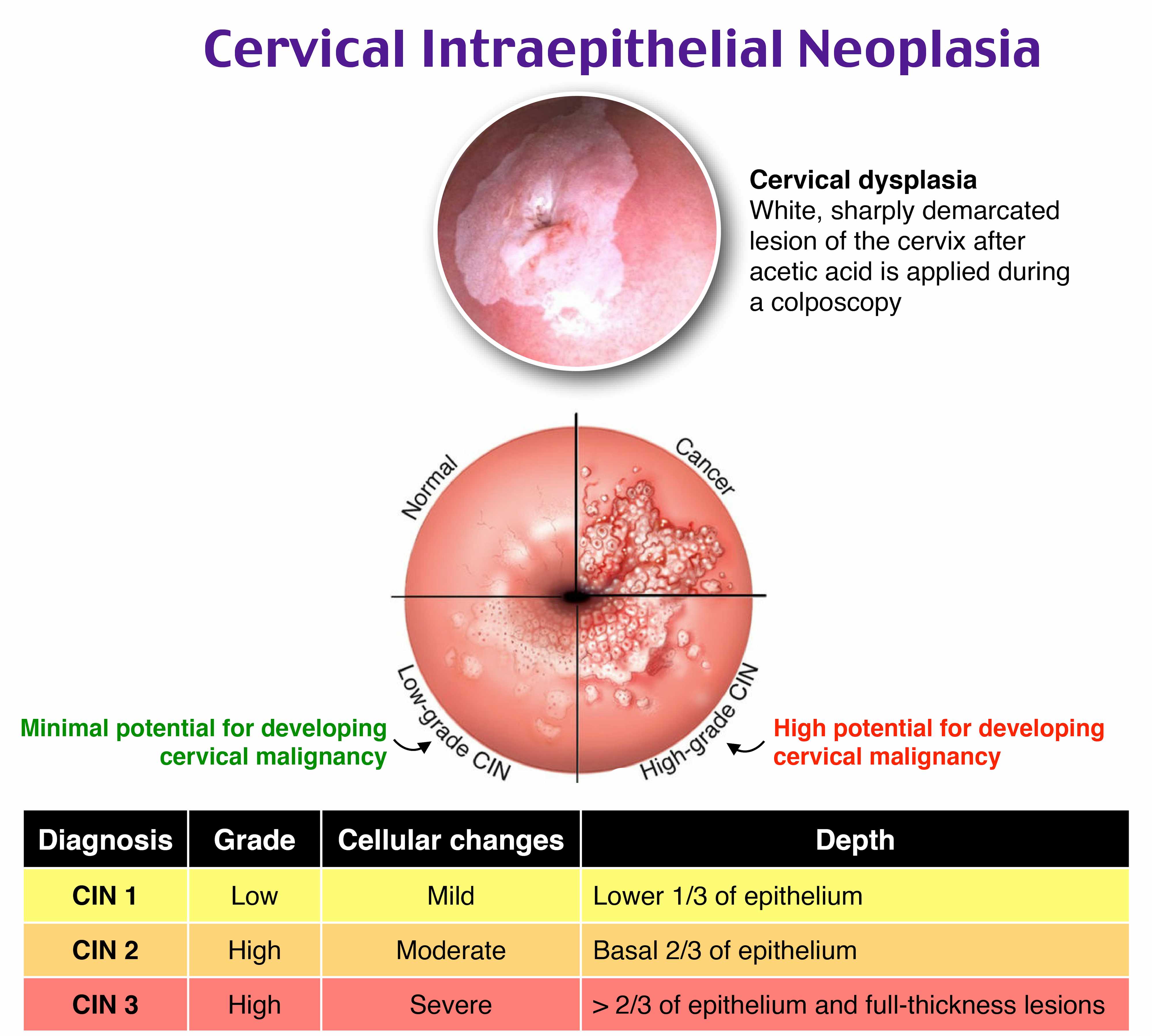D is the correct answer
Explanation:
Colposcopy with guided biopsies is the gold standard in identifying premalignant disease. Cervical intraepithelial neoplasias are premalignant conditions of the cervix affecting the ectocervix. Women with low-grade cervical intraepithelial neoplasia have a lower risk of lesion progression to invasive disease, while those with high-grade lesions are at higher risk. Management of high-grade squamous intraepithelial lesion (HSIL) may be either expedited treatment or colposcopy with directed biopsies. Close follow-up may occur when histology confirms low-risk lesions such as CIN 1 only when the squamocolumnar junction and the upper limit of any lesion were fully visualized and endocervical sampling, if collected, was less than CIN 2. If a colposcopy is preceded by HSIL and is inadequate, an excisional procedure is indicated. Loop electrosurgical excision procedure, cold knife conization, and laser conization are examples of excisional procedures.

Colposcopy and human papillomavirus-based testing in 1 year (A) is appropriate for this clinical scenario with adequate colposcopy. Cryotherapy (B) and laser ablation therapy (C) are acceptable treatments for CIN 1. However, since the colposcopy is inadequate, a diagnostic excisional procedure is recommended.
P.S. Want to test your knowledge with more questions like this? Take advantage of 20% off the Rosh Review CREOG Qbank and get access to 2,000 CREOG-formatted questions with detailed explanations and images!

